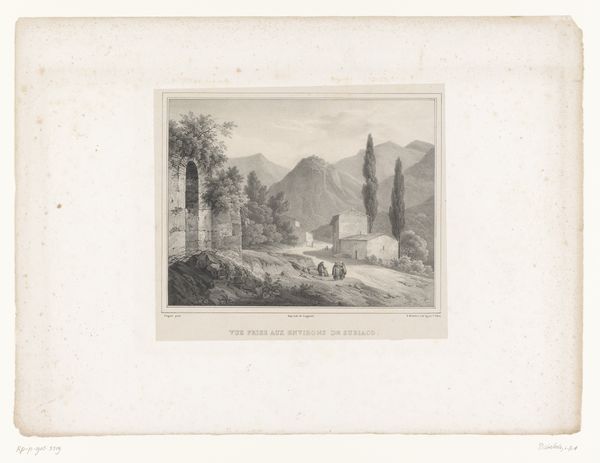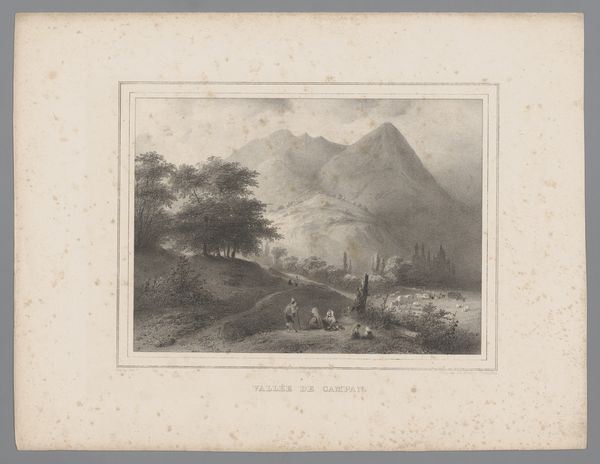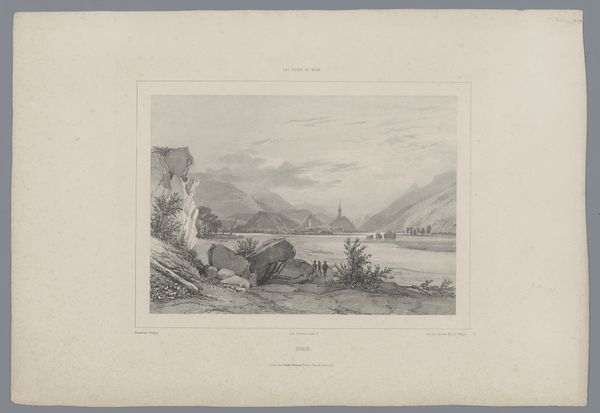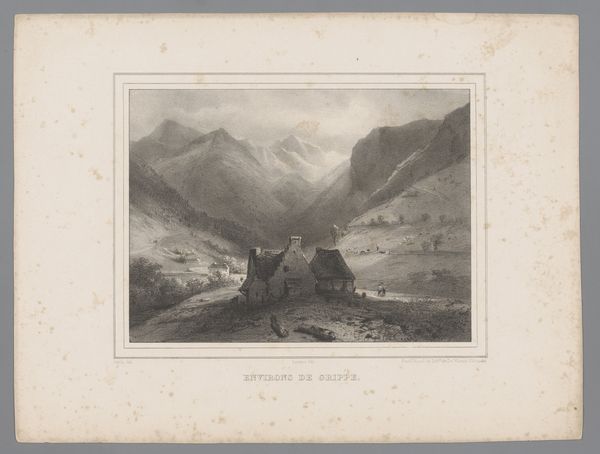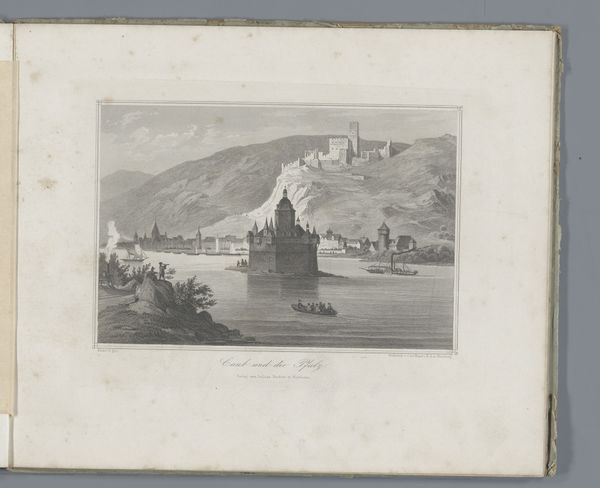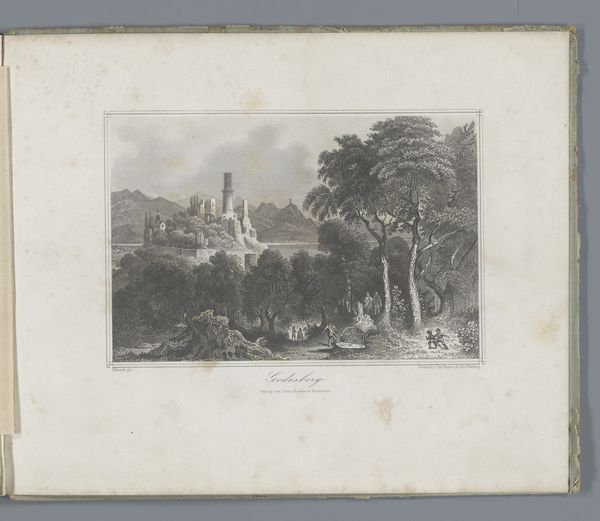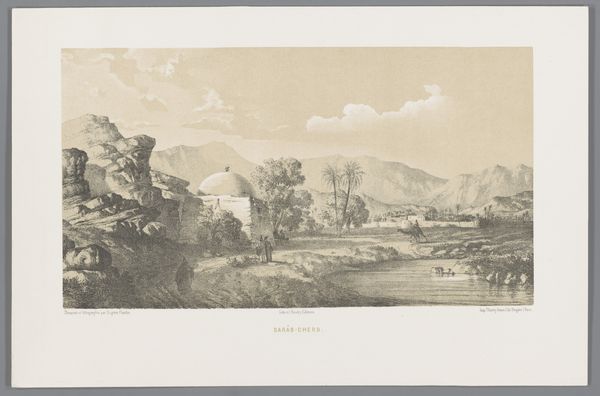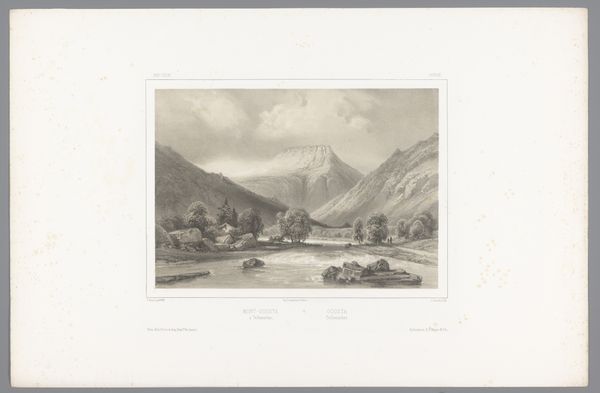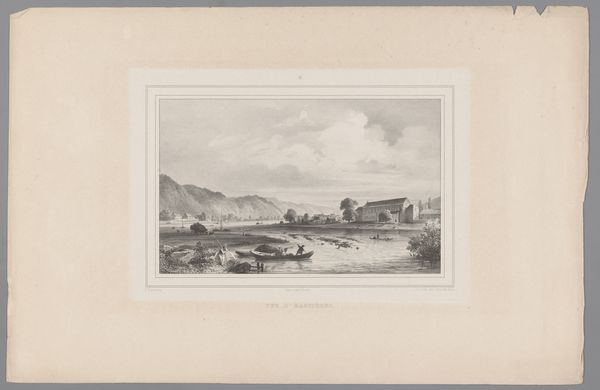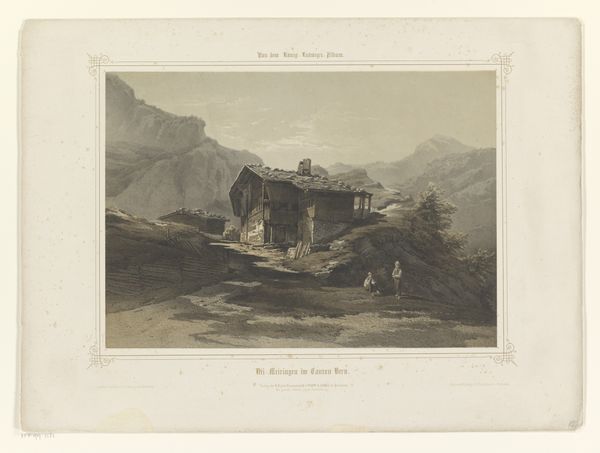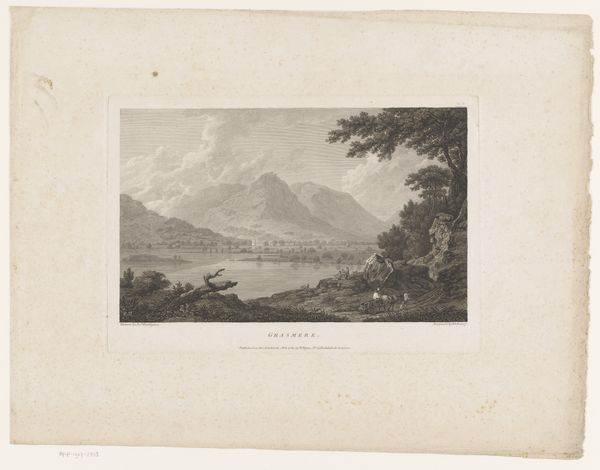
print, engraving
# print
#
landscape
#
romanticism
#
mountain
#
engraving
Dimensions: height 275 mm, width 358 mm
Copyright: Rijks Museum: Open Domain
Curator: Berglandschap met dorp, or Mountainous Landscape with Village, an engraving by Paulus Lauters sometime between 1816 and 1851. It's certainly a very scenic view of what appears to be a small town nestled among these grand mountains. I find the landscape almost overwhelming in comparison to the village and the figures in the foreground. What do you make of it? Editor: It’s lovely! So detailed. I am really interested in how prints like this were produced, being copies of copies distributed to reach wider audiences. Considering it's an engraving, what can you tell me about the process and how it relates to the overall artistic message, perhaps? Curator: Engraving, precisely. So we consider the physical labor involved, the skilled hand meticulously carving lines into a metal plate. How does that relate to the Romantics' fascination with nature? It's almost oppositional – one celebrates the raw, untamed world, the other tames that through laborious manufacture for commercialization. The consumption of these images also allowed the bourgeoise to participate from their drawing rooms, engaging with an idealized landscape divorced from their own productive work and industries, of course. It invites the question – what is truly *authentic*? Editor: So, you’re suggesting that there's a tension between the romanticized landscape depicted and the very material production that brings that image to the masses, therefore raising this interesting question of *authenticity*? That's really interesting to think about! How might the accessibility of the prints influence ideas about landscape and ownership? Curator: Absolutely! Prints like this democratize art viewing, sure, but what's also at play are labor hierarchies inherent in the commercialization of landscapes. Who profited from this labor? How does the engraver's hand impact the representation of the village or those monumental mountains themselves? Was the production or materials involved in the engraving process a local or colonial transaction? Considering its distribution networks informs our awareness of cultural consumption back in this era, I wonder… Editor: I hadn't considered the engraver's perspective, the business aspect to all this, or where their supplies might be sourced from! This perspective offers a more layered approach to looking at the social and economic elements connected to even seemingly simple landscape artworks! Curator: Exactly! Now we consider everything when trying to understand what messages were promoted, reproduced and finally consumed back then.
Comments
No comments
Be the first to comment and join the conversation on the ultimate creative platform.


